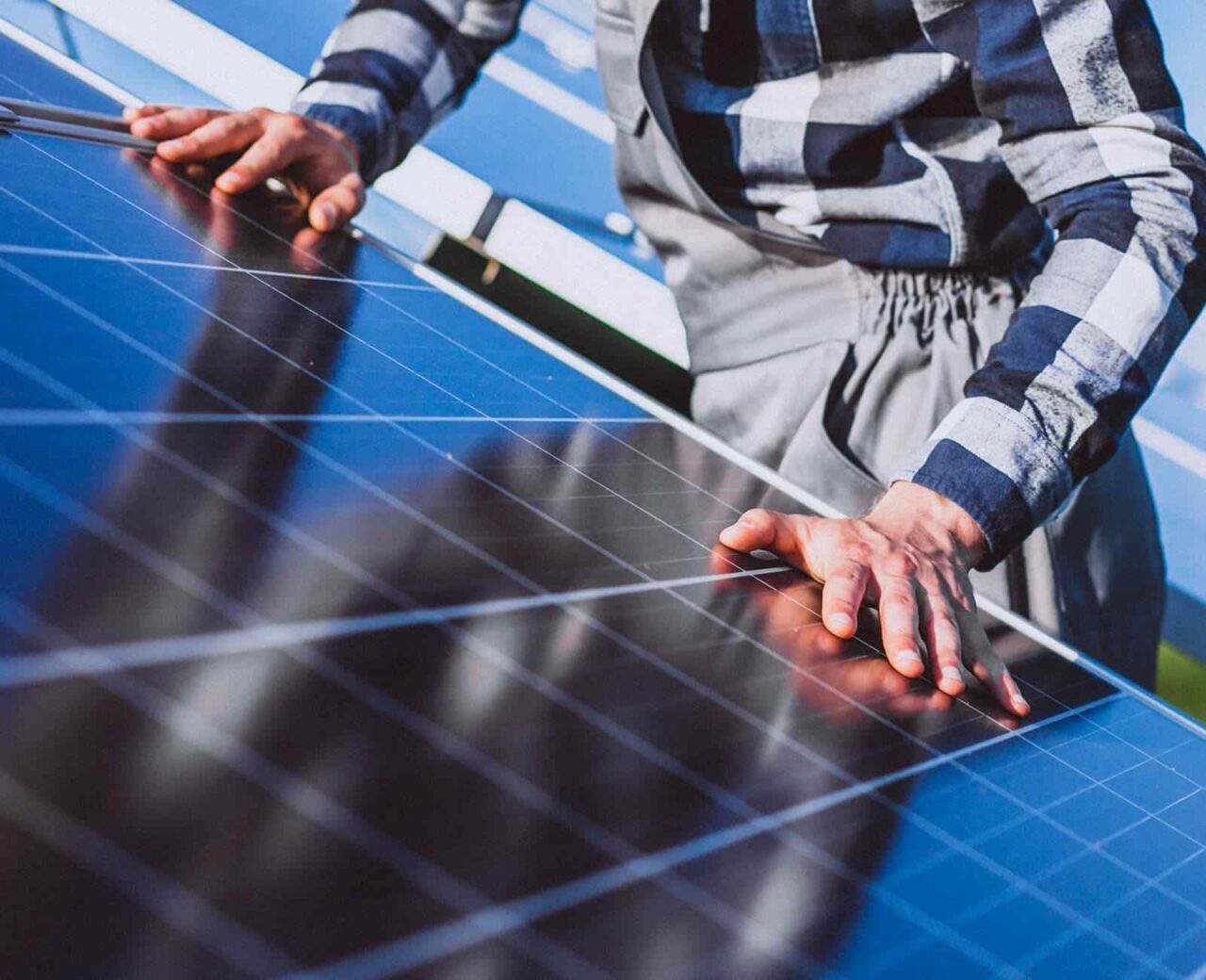Written by Davey Newlove
Purchasing a solar panel installation is an exciting process for homeowners. There are many steps in this process to help ensure that homeowners get a safe and reliable installation. After you have chosen your installer, the process of getting the panels installed on your property can fully begin. Let’s take a look at the steps of a solar panel installation.
Site Evaluation
Once you contact JSunPV about your solar project, a representative will be in contact with you to help ensure a viable location on your property for the solar project to be built. The solar panel installation could be on your roof or as a ground mounted system somewhere on your property. Some conditions that could play a factor in your installation are structural integrity and the orientation of your rooftop. For ground mounted systems, slope and soil type could play a factor in where your system is installed. There are many different factors that could affect how and where your solar system is installed. This is why a JSunPV professional will help guide you through this complicated process.
Preliminary Quote
After your site has been assessed and a practical location for your installation has been chosen, a solar analysis will be generated using some of the state of the art solar design software. This design software should help give a proper analysis of how your system will function at its peak performance. The analysis should contain a shading report to provide the most optimal positioning of the solar panels on the customer’s property. This quote will contain the most affordable solar system design to ensure the energy and economic security of your solar system.
Final Proposal
At this stage of the installation, the design will be finalized to allow for the customer to fully pursue construction of their renewable energy project. If any changes from the original design are made, they will be approved at this step in the process. The aesthetics of the design are checked along with the electrical work and the estimated system production. The cost for the equipment to be installed will be determined as well as the cost of labor to complete the project. This will all lead to the final price tag for the solar panel installation.
Signed Contract
Once all the previous steps have been completed, the solar installer will draw up a contract for the customer to sign. This contract should clearly lay out the scope of work to be performed as well as set up a payment schedule for the services rendered for the job. If the customer has financed the project, the terms of the financing will be approved and signed. A deposit will then normally be paid at this point to help get the job started.
Permitting & Approvals
Once the solar panel installation contract has been signed, the installer will begin the permitting process with the authorized housing jurisdiction, or AHJ. The reason why an initial deposit is paid is because the permitting process takes time and normally requires a fee to be paid to the AHJ. While the permit is being applied for, the solar installer will also begin working on the interconnection process with the customer’s utility. The interconnection process is the process in which the installer applies for and receives permission from the local utility company to connect to the grid on the customer’s behalf. The process of permitting and interconnection can vary by jurisdiction and utility. The actual work of the solar panel installation should not begin until the permit for the job has been approved by the AHJ.
Procurement of Materials
At the same time as the permitting and approvals process, the solar installer will be ordering all required material for the project from a solar equipment supplier. The modules and inverters for the renewable energy project could take anywhere from 5 days to a couple weeks depending on product availability. Once the installer receives the equipment a quality assurance check is performed to make sure that no equipment was damaged in the delivery process.
Building the Project
Once all the proper paperwork for the solar panel installation has been obtained and the material has been delivered, the actual installation of the project can begin. The installation process for a residential solar system is a fairly quick process that doesn’t take more than a week. The install could take a little bit longer depending on system size and weather conditions. At this point in the project, the customer can sit back and relax and let the solar professionals do their job. It is worth noting that the customer’s power may need to be turned off for a few hours while the electrical work for the project is being done.
Commissioning the Site
Now that all the solar panel installation work is complete, the solar installer will schedule and coordinate all inspections with the AHJ and utility. Once the utility has inspected and signed off on the project, a meter swap will happen to change the meter from single direction to bi-directional to make sure the solar energy system interacts properly with the grid. Once the utility gives the customer permission to operate (PTO), the system can be turned on. The monitoring for the system will also be set up to help ensure that the solar energy system is always performing optimally.
The several steps of the process have been carefully created to help regulate the solar industry and keep individuals and utilities safe. Getting a solar panel installation is an exciting process that helps customers save money and reduce their carbon footprint. If you feel that going solar is right for you, contact JSunPV today to get started on your project!

